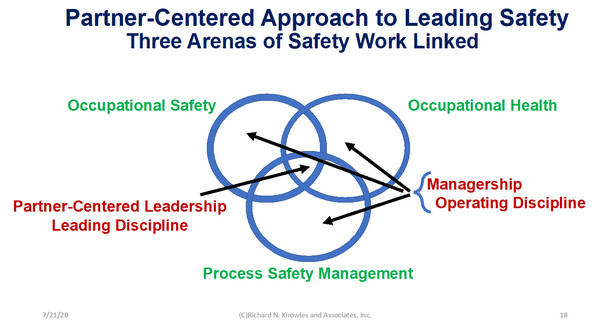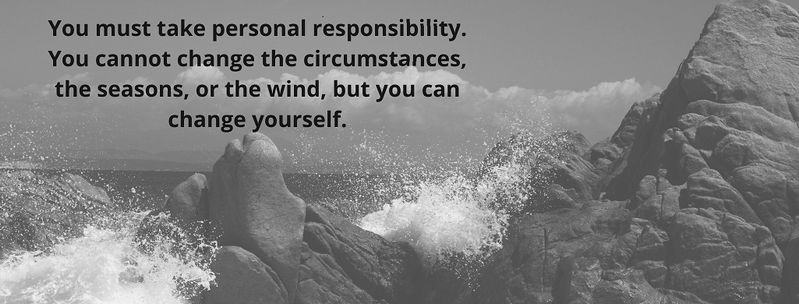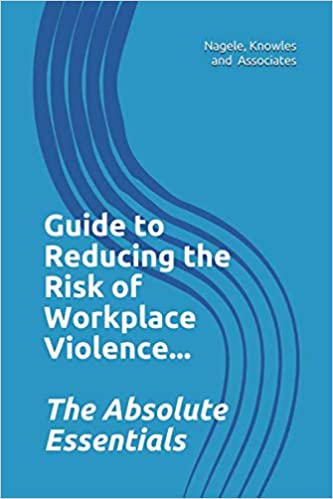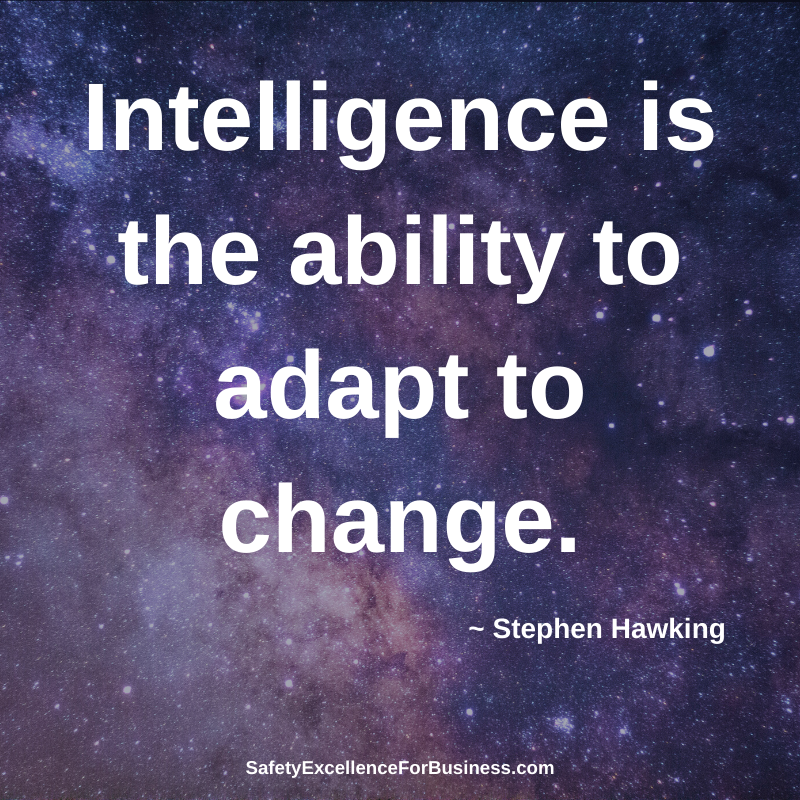Not to be ignored…
The Bureau of Labor Statistics (BLS) report for 2019, the most recent summary report, shows that in 2019, 5,333 people were killed doing their jobs.
 In 2017, 5,147 died and in 2018, 5,250 died. For the last 5-6 years the trend has slowly gotten worse. (Note: The BLS reports do not show much, if any, progress in reducing the number of people being killed and injured over the last 5 years or so.)
In 2017, 5,147 died and in 2018, 5,250 died. For the last 5-6 years the trend has slowly gotten worse. (Note: The BLS reports do not show much, if any, progress in reducing the number of people being killed and injured over the last 5 years or so.)
In 2019, about 2,814,000 people were hurt, which is about the same level as in 2017 and 2018.
Thousands of people are working to improve safety in the workplace, yet these numbers show that improvement in performance is almost non-existent. The various safety journals have lots of good information about ways to improve things. There are lots of consultants doing a lot of work with various organizations to improve safety. And there are many professional safety organizations, including OSHA, ASSP and the National Safety Council, that provide increased training and awareness. Still, people are being killed and hurt at work.
Why isn’t there progress?
All these statistics are lagging indicators. So, what drives this poor performance? What are the leading indicators showing us?
I think that the key leading indicator relates to the way the organizations are managed and led. The traditional, top-down, command and control approach, in a whole lot of organizations, is at least 100 years old and is based on Frederick Taylor’s Principles of Scientific Management, which goes something like:
The people at the top of the organization are smarter and brighter than those doing the work so the top people know better and tell the workers what to do and the workers do it – a.k.a. the mechanical model (of the past).
There are lots of examples that show that this approach does not work very well. For example, in a recent article I saw, the safety regulators in Australia 35 years ago introduced the Sex Discrimination Act, but in 2018 the Australian Human Rights Commission survey showed that 1 in 3 workers were harassed in the last 5 years – despite the endeavor. So much for top-down proclamations. Please don’t dismiss this example as just a problem in Australia or that sexual harassment is not a safety problem because you’ll be wrong on both points.
We declare safety endeavors over our workplaces with phrases like “The Goal is Zero” and slogans like, “Safety First.” Similarly, “Zero Tolerance” for harassing and bullying behaviors. And these are important because we need visual signage and reminders for raising our awareness. Yet we know that words and declarations alone won’t work as effective motivators for better safety performance or better treatment of people, nor does the old mechanical model/command and control approach work for the long-term.
We have to bring all the people together.
In every place in which we have worked we bring the people together to talk about the problem, open up the free flow of information, treat each other with respect, listen to each other because everyone has an important perspective, learn, seek better ways, and make the changes we need to make. When people are participating in creating the changes they do not resist the changes but rather apply their energy and creativity to solving the problems.
When I did this as a Plant Manager of a large chemical plant, working with the people, the injury rates dropped by 97% in just 3 years. When I worked in a large sugar mill with all the people the injury rate dropped from about 10 to ZERO in just 3 weeks. (This was shown in their annual data). When I worked with people in a truck manufacturing plant this way, the injury rate dropped from about 6 to ZERO in just a few days. (This was also shown in their annual data.)
There was no new investment in computer programs or equipment. Long involved training courses were not needed.
Most people want to become part of the solution!
It is time to wake up!
Let’s put the 100-year old, Frederick Taylor model in the museum and step up to working with all the people. Become engaged with your people in Safety. It takes a lot less time and saves a lot of money!
We know how to make this happen and would like the opportunity to talk with any of you. Please call at 716-622-6467. You can find background information at RNKnowles Associates.

 Learning to work more effectively, through our safety work, spread to the whole organization. Each of you reading this newsletter can make a big difference as you engage with the people in your organizations, sharing information, building respect and trust. The impact of your work will spread.
Learning to work more effectively, through our safety work, spread to the whole organization. Each of you reading this newsletter can make a big difference as you engage with the people in your organizations, sharing information, building respect and trust. The impact of your work will spread.
 We each need to take the personal responsibility to try to avoid spreading the virus. With all the pressures, this is not easy. It is best if we each take personal responsibility to social distance and try to avoid spreading the virus. Government edicts really do not cover the details of what we each need to do very well. It is really up to us.
We each need to take the personal responsibility to try to avoid spreading the virus. With all the pressures, this is not easy. It is best if we each take personal responsibility to social distance and try to avoid spreading the virus. Government edicts really do not cover the details of what we each need to do very well. It is really up to us.

 The COVID-19 pandemic, the return to school questions, the protests and riots in so many of our cities, the bitter political campaign, the demand for using the “correct” words, are driving people crazy. The COVID-19, the questions, the anxieties and concerns, spill into our workplaces causing a lot of uncertainty and stress. We see this happening every day. Our businesses, our schools and hospitals, our governments, and not-for-profits, at all levels, are struggling. Changes and pressures are coming faster and faster.
The COVID-19 pandemic, the return to school questions, the protests and riots in so many of our cities, the bitter political campaign, the demand for using the “correct” words, are driving people crazy. The COVID-19, the questions, the anxieties and concerns, spill into our workplaces causing a lot of uncertainty and stress. We see this happening every day. Our businesses, our schools and hospitals, our governments, and not-for-profits, at all levels, are struggling. Changes and pressures are coming faster and faster. In thinking about your own place where you work, what do you suppose it would be like if you did some of these things? Do you think that you could begin talking with others about the COVID-19 challenges and building a more respectful environment? What do you think it would be like if you could openly talk together about the important issues like workable, social distancing and improving the safety of your job?
In thinking about your own place where you work, what do you suppose it would be like if you did some of these things? Do you think that you could begin talking with others about the COVID-19 challenges and building a more respectful environment? What do you think it would be like if you could openly talk together about the important issues like workable, social distancing and improving the safety of your job? You can’t turn on the news or check your Internet homepage without sensing the depth of the issues that our country is experiencing. Whether it is returning to the workplace amidst COVID-19 rules, political protests, religious non-tolerance, or negative nightly news events – we’re experiencing a wide berth of dramatic events. And each of us has an opinion, a response, a way that we individually see these events and cope with this discord.
You can’t turn on the news or check your Internet homepage without sensing the depth of the issues that our country is experiencing. Whether it is returning to the workplace amidst COVID-19 rules, political protests, religious non-tolerance, or negative nightly news events – we’re experiencing a wide berth of dramatic events. And each of us has an opinion, a response, a way that we individually see these events and cope with this discord. It doesn’t have to be that way! Take a timeout!
It doesn’t have to be that way! Take a timeout! In times like this, when the business and production activities are ramping up, there is a real danger that safety problems will show up. Any time the level of activity changes, up or down, is a time of danger.
In times like this, when the business and production activities are ramping up, there is a real danger that safety problems will show up. Any time the level of activity changes, up or down, is a time of danger. It will not be easy as people are returning to the workplace. Leaders and managers must get out of their offices and purposefully engage with the people. They need to talk about the COVID-19 problem, share what is happening, and talk about the problems with which they are dealing. They need to do this with openness, honesty, respect, and caring. This is not just a one-off contact; leaders and managers need to engage in these conversations every day!
It will not be easy as people are returning to the workplace. Leaders and managers must get out of their offices and purposefully engage with the people. They need to talk about the COVID-19 problem, share what is happening, and talk about the problems with which they are dealing. They need to do this with openness, honesty, respect, and caring. This is not just a one-off contact; leaders and managers need to engage in these conversations every day! I have abstracted it here for those reading this newsletter since you may have missed it.
I have abstracted it here for those reading this newsletter since you may have missed it. In all cases, the healthcare provider and local health department should be consulted.
In all cases, the healthcare provider and local health department should be consulted.



